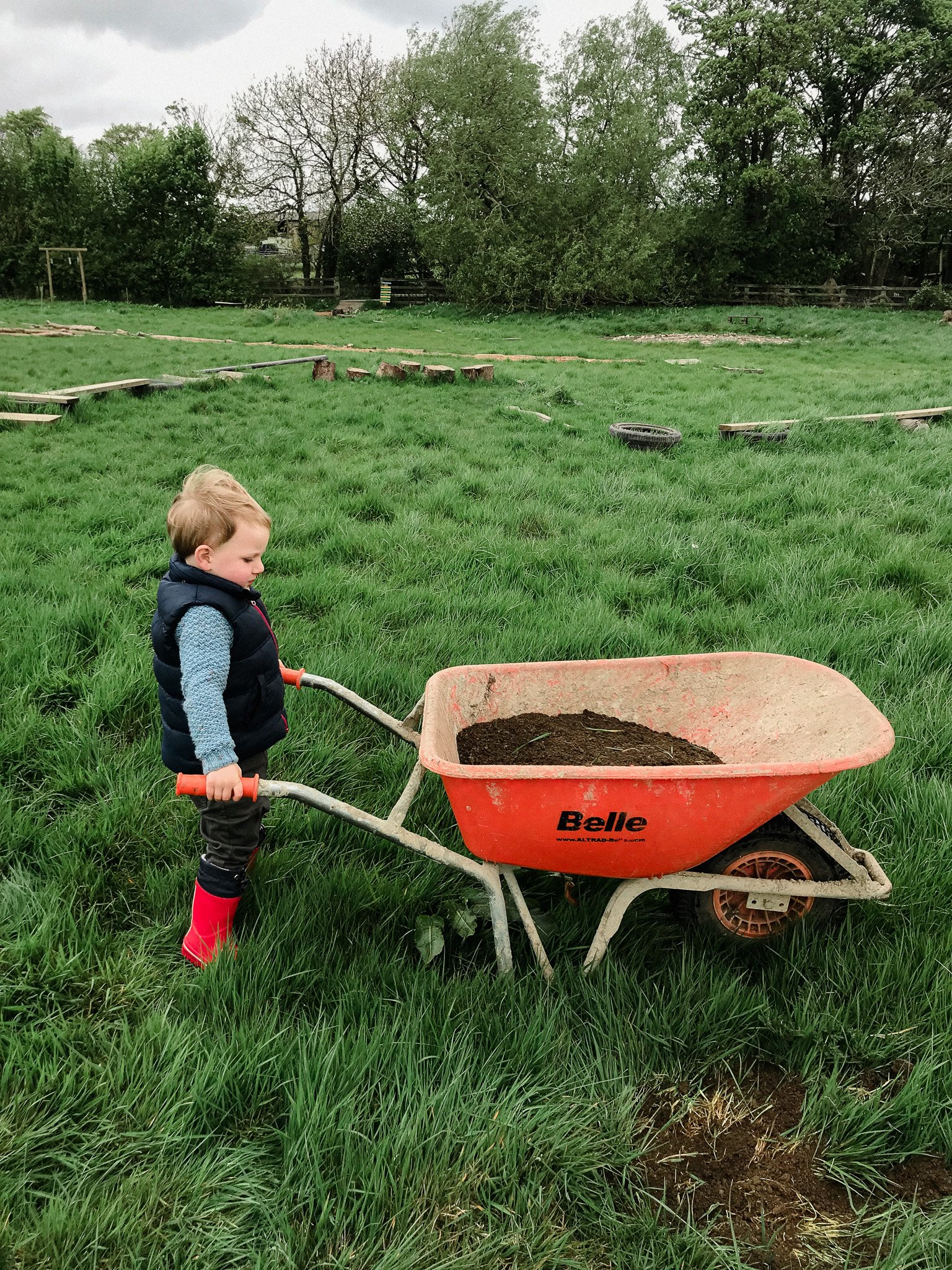Hugel-ing
Hügelkultur: mound culture
Hugel beds have been used for centuries across Europe to best make use of the resources available. They’re a permaculture principle which is a hardworking staple for lots of homesteads. Building on no-dig theories, it’s a wonderful way to look after the little eco-system of your garden.
We’ve been making simple hugel beds since we began at Kith. Layering whatever was to hand with a top up of fresh manure from the kind farmers when we can. The garden was made from layers of cardboard and manure, leaves and even spent hops from the local brewery. We’ve spent hours piling up layer after layer to build a rich earth we can sow our crops in. 4 years later, the soil is becoming more manageable and each season we can feel the rewards of all the hard work.
It’s all about the layers!
This little sketch was from our hugel bed in front of the yurt in 2022. The plan was to have 8 layers (I think we ended up with a few more) which would over time break down to provide a rich fertile soil for us to grow in to.
Hardwood logs
Sticks
Wood chip
Cardboard
Manure
Grass/soil clods
Compost
Mulch
What’s so great about a hugel bed?
The benefits we’ve found are vast and mostly go unseen. The main reason we’ve been using this method is because we’re lucky enough to have an abundance of resources we’re able to put to good use and we’re looking to create systems where we don’t have to rely on outside input too often.
A hugel bed is a hard working mound of earth…
The hardwood breaks down slowly over time releasing heat.
The wood also becomes spongy over time and any moisture is absorbed into it. It releases this moisture slowly so in the dry seasons there is often still some water in the soil to keep plants happy
The wood decays to create a rich humus like you’d find in woodlands. Plants, shrubs and trees love this fertile soil and really thrive.
The pockets of air trap heat so often you’re able to plant into these beds a little earlier in the season than established beds
It creates a closed loop system making use of the resources you have to hand.
Plus it’s a no-dig system which protects the integrity of the soils biome.



